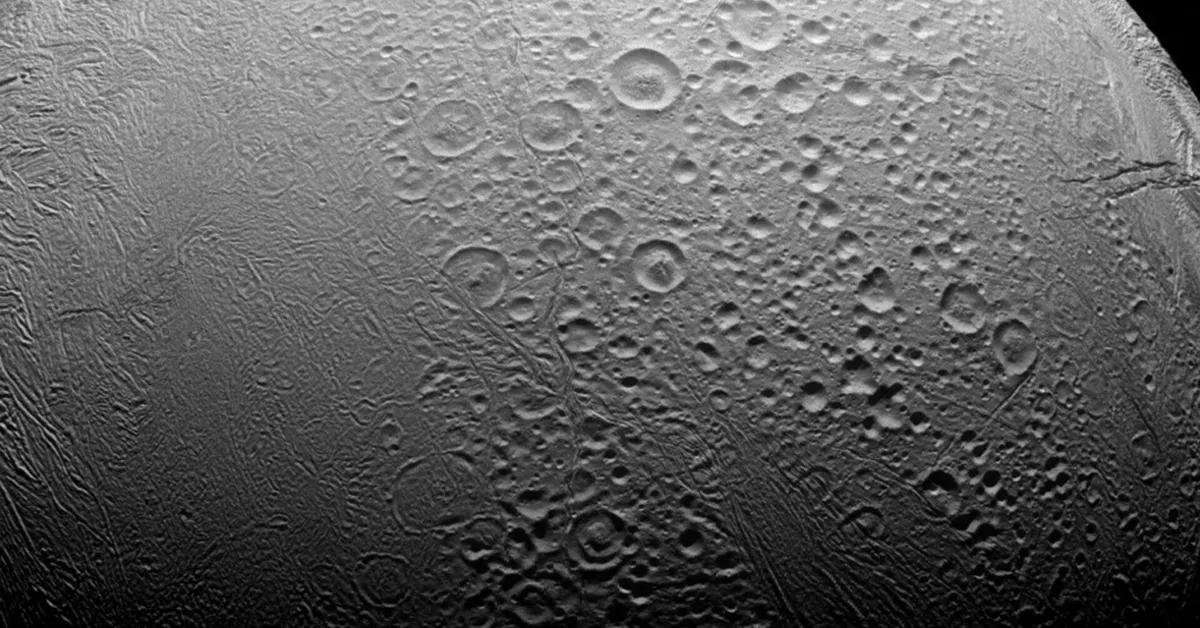
Recent analysis of data collected by NASA's Cassini spacecraft has provided intriguing insights into Saturn's moon, Enceladus, highlighting its potential to support life. The study focuses on the discovery of complex organic molecules in the geyser-like jets of ice grains that erupt from the moon's subsurface ocean. This research revisits data obtained during Cassini's closest flyby of Enceladus in 2008, where it passed through plumes of ice and gases escaping from fractures near the moon's south pole.
The researchers meticulously reexamined the data from Cassini’s 2008 flyby, which allowed them to gain a deeper understanding of the moon's subsurface chemistry. This analysis confirmed the presence of certain organic molecules, including precursors for amino acids, which are fundamental building blocks of proteins essential for life. Notably, the study also identified new classes of organic molecules that had not been previously detected, suggesting the potential for more complex organic compounds to form under specific conditions.
The discovery of these organic molecules is significant because they could serve as intermediates in the synthesis of complex compounds vital to life. However, it is essential to note that these molecules can also form through abiotic processes without any biological interaction, as pointed out by researcher Khawaja. Thus, while the presence of these organic compounds is promising, it does not definitively indicate the existence of life on Enceladus.
Enceladus, named after a giant from ancient Greek mythology, is regarded as one of the most fascinating locations in our solar system for the search for extraterrestrial life. This moon, which has a diameter of 313 miles (504 km), orbits Saturn at a distance of approximately 148,000 miles (238,000 km). Scientists believe that Enceladus contains the essential chemical ingredients for life, including hydrothermal vents that release hot, mineral-rich water into its ocean—similar to conditions that may have led to the emergence of life on Earth.
The subsurface ocean of Enceladus is located beneath an ice crust that is about 12-19 miles (20-30 km) thick. Although the recent study did not find direct evidence of life or biosignatures—indicators of past or present life—researcher Khawaja emphasized that the presence of three critical elements for habitability—liquid water, an energy source, and essential organic compounds—exists on Enceladus. This discovery underscores the moon's importance as a target for future exploration.
The European Space Agency is actively planning a future mission to revisit Enceladus. Khawaja advocates for the moon to be prioritized in the quest to explore habitability and search for signs of life. The researchers conducted a comprehensive chemical analysis of ice grains sampled from the plume during the Cassini flyby, which occurred at a remarkable speed of about 40,250 miles (64,800 km) per hour. These ice grains, ejected from the subsurface ocean just minutes earlier, provide unaltered samples that reflect the complex chemical reactions occurring in the ocean.
In summary, while the Cassini mission did not find direct evidence of life on Enceladus, the findings significantly enhance our understanding of this icy moon's potential to harbor life. The ongoing interest in Enceladus highlights its critical role in the broader search for extraterrestrial life within our solar system.